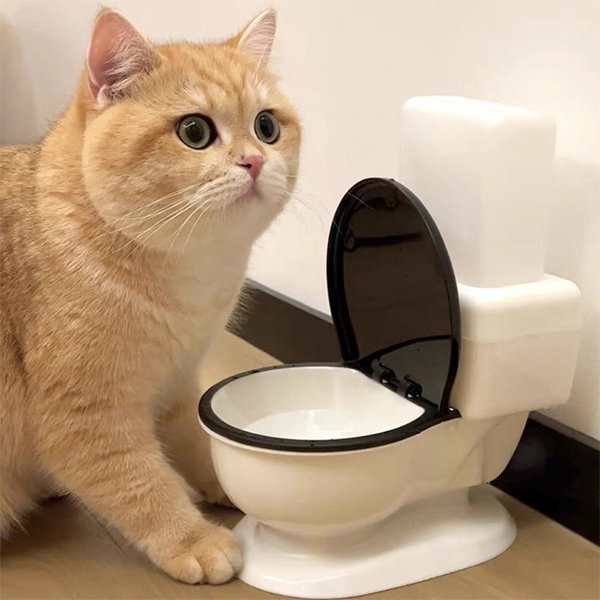Do you find yourself hunting for ideas about Can You Flush Cat Poop Down The Toilet??

Intro
As pet cat owners, it's essential to be mindful of just how we deal with our feline pals' waste. While it may appear convenient to flush cat poop down the commode, this method can have harmful repercussions for both the setting and human health.
Alternatives to Flushing
Fortunately, there are much safer and much more liable means to dispose of feline poop. Take into consideration the complying with alternatives:
1. Scoop and Dispose in Trash
One of the most usual approach of throwing away feline poop is to scoop it right into a biodegradable bag and throw it in the trash. Make sure to make use of a committed clutter scoop and throw away the waste promptly.
2. Use Biodegradable Litter
Opt for eco-friendly cat litter made from materials such as corn or wheat. These trashes are environmentally friendly and can be securely taken care of in the garbage.
3. Hide in the Yard
If you have a backyard, think about burying pet cat waste in an assigned area away from veggie gardens and water sources. Make sure to dig deep enough to prevent contamination of groundwater.
4. Mount a Pet Waste Disposal System
Invest in a pet garbage disposal system specifically designed for feline waste. These systems utilize enzymes to break down the waste, minimizing smell and ecological influence.
Wellness Risks
Along with ecological concerns, flushing feline waste can additionally posture health threats to people. Cat feces may consist of Toxoplasma gondii, a parasite that can cause toxoplasmosis-- a potentially severe health problem, especially for expecting women and people with damaged immune systems.
Ecological Impact
Flushing cat poop presents harmful pathogens and parasites into the water system, posturing a substantial danger to water ecosystems. These contaminants can adversely affect marine life and compromise water top quality.
Conclusion
Liable family pet ownership expands past providing food and shelter-- it likewise includes appropriate waste management. By avoiding flushing pet cat poop down the toilet and going with alternative disposal methods, we can lessen our environmental footprint and shield human health.
Why Can’t I Flush Cat Poop?
It Spreads a Parasite
Cats are frequently infected with a parasite called toxoplasma gondii. The parasite causes an infection called toxoplasmosis. It is usually harmless to cats. The parasite only uses cat poop as a host for its eggs. Otherwise, the cat’s immune system usually keeps the infection at low enough levels to maintain its own health. But it does not stop the develop of eggs. These eggs are tiny and surprisingly tough. They may survive for a year before they begin to grow. But that’s the problem.
Our wastewater system is not designed to deal with toxoplasmosis eggs. Instead, most eggs will flush from your toilet into sewers and wastewater management plants. After the sewage is treated for many other harmful things in it, it is typically released into local rivers, lakes, or oceans. Here, the toxoplasmosis eggs can find new hosts, including starfish, crabs, otters, and many other wildlife. For many, this is a significant risk to their health. Toxoplasmosis can also end up infecting water sources that are important for agriculture, which means our deer, pigs, and sheep can get infected too.
Is There Risk to Humans?
There can be a risk to human life from flushing cat poop down the toilet. If you do so, the parasites from your cat’s poop can end up in shellfish, game animals, or livestock. If this meat is then served raw or undercooked, the people who eat it can get sick.
In fact, according to the CDC, 40 million people in the United States are infected with toxoplasma gondii. They get it from exposure to infected seafood, or from some kind of cat poop contamination, like drinking from a stream that is contaminated or touching anything that has come into contact with cat poop. That includes just cleaning a cat litter box.
Most people who get infected with these parasites will not develop any symptoms. However, for pregnant women or for those with compromised immune systems, the parasite can cause severe health problems.
How to Handle Cat Poop
The best way to handle cat poop is actually to clean the box more often. The eggs that the parasite sheds will not become active until one to five days after the cat poops. That means that if you clean daily, you’re much less likely to come into direct contact with infectious eggs.
That said, always dispose of cat poop in the garbage and not down the toilet. Wash your hands before and after you clean the litter box, and bring the bag of poop right outside to your garbage bins.
https://trenchlesssolutionsusa.com/why-cant-i-flush-cat-poop/

I was shown that report about How to Dispose of Cat Poop and Litter Without Plastic Bags from someone on our other web property. Do you know another person who is curious about the niche? Please feel free to share it. I praise you for your time. Kindly check up our site back soon.
Make An Appointment